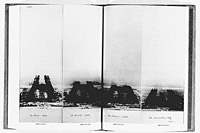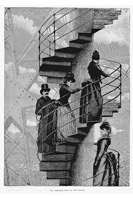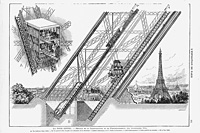Fourth Paris International Exposition of 1889
Centenary of the French Revolution
Column: Eiffel Tower
The Eiffel Tower was the largest monument at the Paris International Exposition of 1889. The initial plan was to construct a "Sun Tower," a stone structure designed to cast light on the entire city of Paris with reflecting mirrors. However, the idea of building such a high stone tower seemed unrealistic. Employed instead was the idea by A. G. Eiffel, who proposed a unit assembly type tower with vertical application of iron bridge production technologies. Although some people were opposed to the construction, saying that the structure would spoil the landscape, it took only two years to complete, which was exceptionally speedy. Hydraulic elevators and telephones were installed, attracting many visitors right after the opening. Although the Eiffel Tower was initially planned to be demolished, with the coming of the age of wireless communication, an antenna was installed, making the tower an important military center. Today, the tower is a must-see landmark of Paris.
- References:
Efferuto 100shunen kinenten jikko iinkai, Gunma kenritsu kindai bijutsukan (ed).: Efferuto: 100nen no messeji kenchiku fasshon kaiga (Efferuto 100shunen kinenten jikko iinkai 1989) <KA382-E27>
Kashima, Shigeru.: Pari banpaku zekkei hakubutsukan (8) 300m no to tanjo tenmatsuki in Seko n. 363 (1996.1) <Z16-72>
Kashima, Shigeru.: Pari banpaku zekkei hakubutsukan (13) Ikai o enshutsu suru denki no hikari in Seko n. 368 (1996.6) <Z16-72>
Kurata, Yasuo.: Efferuto monogatari (Iwanami shoten, 1983) <KA382-27>
Matsuura, Hisaki.: Efferuto shiron (Chikuma shobo, 1995) <KA382-E51>





